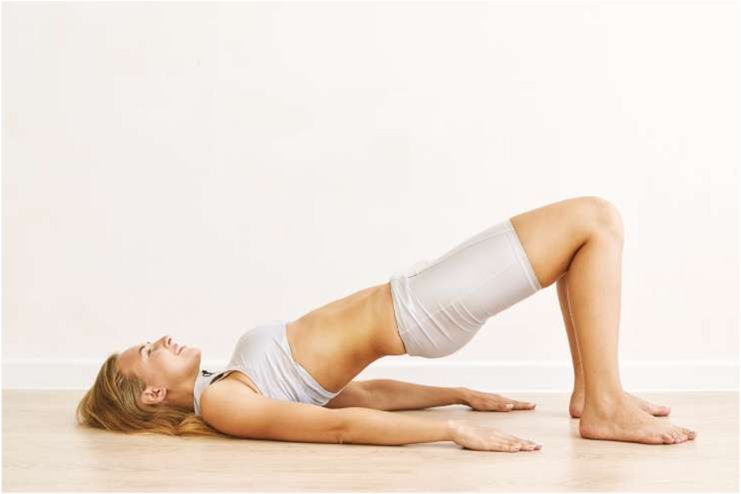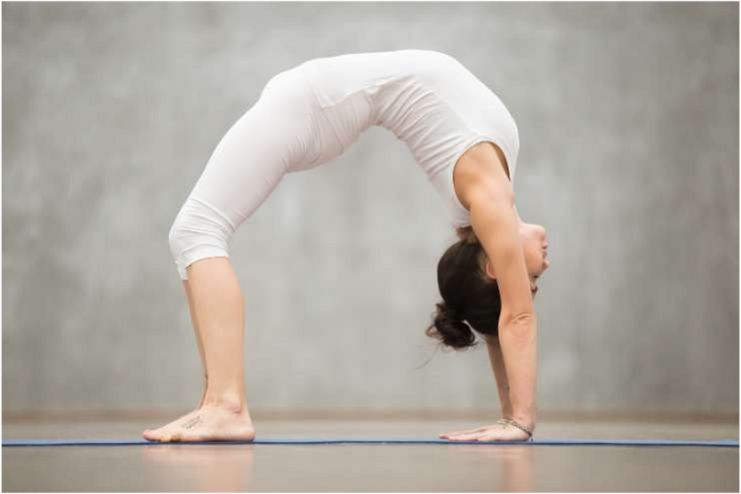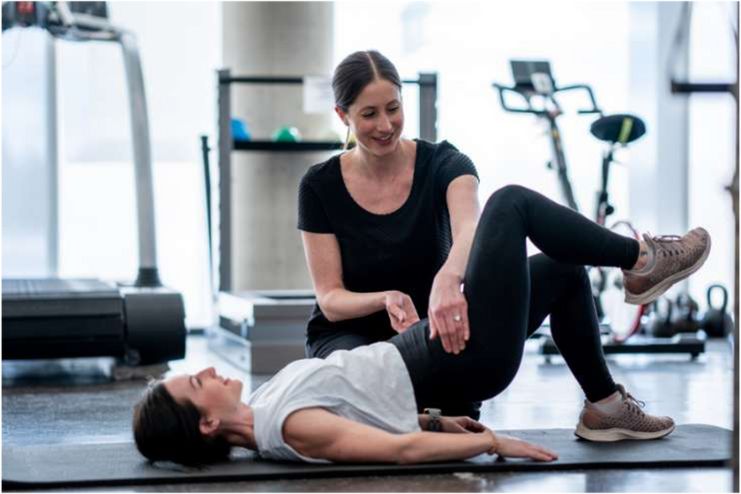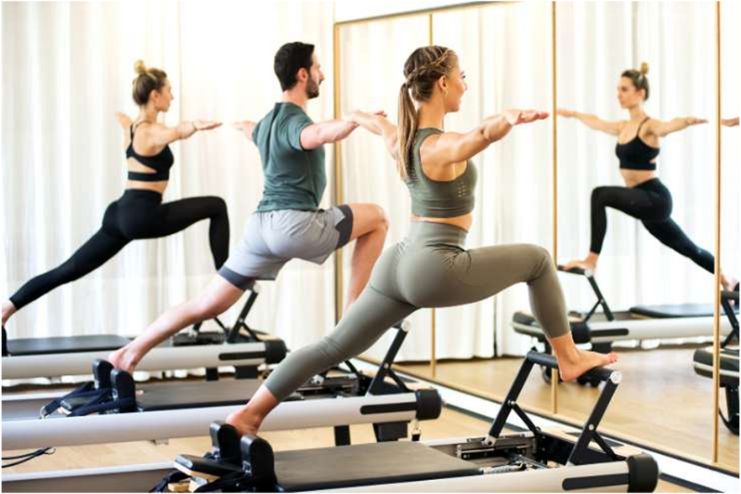Affiliate Disclaimer
Some links in this article are affiliate links. We may earn a small commission if you make a purchase through these links, at no extra cost to you. We only recommend products we find useful to our readersIncontinence is a common but frequently disregarded health issue that significantly impacts daily life and affects people of all ages and demographics. Involuntarily losing control of one’s bowel or bladder can cause social distancing, humiliation, and a lowered quality of life. Because it is a common problem affecting people of all ages, genders, and medical conditions, incontinence requires efficient management techniques. Of these tactics, pelvic floor exercises are critical to improving bowel and bladder control.
The purpose of the article is to raise awareness of the value of pelvic floor exercises in the treatment and prevention of incontinence. We highlight how common this illness is and how it significantly affects day-to-day functioning to emphasize the importance of including focused activities in one’s regimen. By providing thorough assistance, we hope to give people the information and resources to take charge of their pelvic health and promote a restored sense of self-worth and well-being.
Understanding Incontinence and Pelvic Floor Health
Overview of Incontinence
Incontinence is a complex health issue affecting millions of people globally in various ways. Different varieties of overflow, stress, urge, and functional incontinence have their characteristics and underlying reasons. The cause of stress incontinence, frequently linked to physical movements like laughing or coughing, is weak pelvic floor muscles. In contrast, overflow incontinence results from an inability to empty the bladder, whereas urge incontinence is characterized by an abrupt and intense need to urinate when physical or mental disabilities hamper a person’s capacity to use the restroom on time.
Ineffective management of incontinence can lead to feelings of rejection, social isolation, dependency, loss of control, and issues with body image for the incontinent individual. In addition, stress from changes in life and relationships, the cost of providing continence care, and the growing amount of time and money needed to clean clothing and bedding can all overwhelm caregivers if not well managed.
Incontinence significantly negatively impacts a person’s quality of life beyond its physical manifestation, including emotional and social aspects. Anxiety, loneliness, and shame become ubiquitous, lowering self-worth and preventing social interaction.
Maintaining the pelvic floor’s health becomes crucial for managing incontinence in this setting. The pelvic floor, a network of muscles, chiefly supports one’s bladder, bowel, and uterus. Increasing the strength of these muscles with specific exercises is essential for regaining control and reducing the difficulties associated with incontinence.
Importance of Pelvic Floor Exercises
Exercises for the pelvic floor, which are sometimes overlooked, are essential for improving pelvic health in general and easing the difficulties brought on by incontinence. These exercises focus on the network of muscles that make up the pelvic floor, which supports the uterus, bladder, and colon. The pelvic floor is located at the base of the pelvis. Strengthening these muscles is key to maintaining appropriate bladder control and avoiding involuntary leaks.
Exercises targeting the muscles beneath the uterus, bladder, and gut (large intestine) can help build stronger pelvic floor muscles. They can assist both sexes who struggle with bowel control or urine leakage. An exercise for strengthening the pelvic floor involves retaining your bladder while acting as you must urinate. The muscles that regulate pee flow are contracted and relaxed. It’s critical to identify which muscles to tense.
The primary purpose of pelvic floor workouts is to strengthen the muscles that control bowel and urine movements. Those who age, become pregnant, give birth, or undergo surgery may lose control over their bladder, which can result in a variety of incontinence symptoms.
Exercises for the pelvic floor, such as Kegels and other specialized movements, offer a focused method of stopping this weakening process. The pelvic floor muscles typically tightly encircle these openings to aid in their closure. Your pelvic floor muscles support sexual function and control the bladder and bowel. Maintaining the strength of the pelvic floor muscles is crucial.
Consistency is essential when it comes to pelvic floor exercises. Frequent practice helps increase tone and endurance while strengthening the pelvic floor muscles. Over time, those who include these exercises in their daily regimen can reduce the symptoms associated with incontinence.
Pelvic Floor Exercises: Techniques and Methods
Types of Pelvic Floor Exercises
Kegel Exercises:

Dr. Arnold Kegel is the inspiration behind the Kegel exercises, which are well known for strengthening the pelvic floor muscles. The method provides focused training for enhanced bladder control and general pelvic health by alternating between contracting and relaxing the muscles that regulate the urine. Your pelvic floor muscles can become more assertive with Kegel exercises. The group of muscles in your pelvic floor that you employ to halt the urine flow, you can avoid inadvertently passing gas or stool or spilling urine by making these muscles more robust. It offers advantages for both vaginal and penile users.
Appropriate Technique: The first step in appropriately executing Kegel exercises is recognizing your pelvic floor muscles. Think about halting the flow of pee in midstream; the muscles involved are the ones you should concentrate on. After identifying them, choose a comfortable position, contract these muscles for five counts, and then release the contractions for five counts. Every day, try to do three sets of ten repetitions. Ensure the contraction only affects the pelvic floor and does not extend to the buttocks or abdomen.
Advantages: Kegel exercises offer benefits that go beyond merely treating incontinence. Strengthening the pelvic floor facilitates better posture, increased pelvic organ support, and enhanced sexual function. These exercises benefit people with stress incontinence by improving muscle tone, which helps to stop leaks when you laugh, sneeze, or exercise.
Kegel exercise variations are designed to accommodate a range of demands and fitness levels. Some variants, such as employing pelvic exercise devices, entail adding resistance or changing the length of the contractions. Furthermore, adding dynamic movements to the routine—such as bridges or squats—can make it even more difficult for people who want to develop their pelvic floor. Speaking with a pelvic health specialist or medical professional can help you customize Kegel exercises.
Bridge Pose and Squats:

Asanas like the Bridge Pose helps strengthen the legs, buttocks, and lower back muscles while offering a great way to work on the pelvic floor. To begin this workout, lie on your back with your knees bent and your feet hip-width apart. Keep your pelvic floor muscles and glutes tight as you raise your hips toward the ceiling.
This upward movement improves stability in the surrounding muscle groups and engages and develops the pelvic floor. Although most people believe that the bridge is a fantastic glute workout, it can also assist in strengthening the muscles in your pelvic floor.
Bridge Pose promotes flexibility, balance, and better blood circulation in the pelvic area, providing a comprehensive approach to pelvic floor health. Frequent practice enhances pelvic floor strength and augments the advantages of specific exercises, such as Kegel exercises.
Squats:
Squats are a multipurpose, high-impact compound exercise that works the pelvic floor and other major muscle groups. When you lower your body into a squat position, the pelvic floor muscles naturally tighten to support the weight and stabilize the pelvis. Maintaining good form and avoiding lower back strain require this engagement.
Though it’s practically dead due to our modern lifestyle of spending long hours sitting at a desk or on a couch, squatting is one of the most natural kinds of movement. Toning your hamstrings and glutes will strengthen your pelvic floor, supporting it more.
Squats are a great way to strengthen your pelvic floor and increase the strength of your lower body. Squats are a dynamic exercise that tests the pelvic muscles in multiple planes of motion, which promotes flexibility and resilience. The pelvic floor muscles are optimally engaged when an appropriate form is emphasized. Squats and the Bridge Pose are two beneficial complements to a pelvic floor workout program that gives a comprehensive and helpful approach to strength and stability.
Pelvic Floor Biofeedback:

A cutting-edge kind of pelvic floor workout called pelvic floor biofeedback uses technology to improve muscle awareness and maximize engagement. By giving people access to real-time data on the coordination and strength of their pelvic floor muscles, biofeedback devices help people optimize their training regimens and guarantee proper muscle activation.
With biofeedback, you can make minor adjustments to your body, such as letting your muscles relax to ease pain or stress. You can breathe more deeply and lower your heart rate, which improves your mood. By practicing with biofeedback, you can learn how to manage your body in new ways. It can aid with everyday tasks or alleviate a health issue.
How to Use It: Depending on the user’s needs, biofeedback devices usually take the shape of sensors or probes that are placed into the rectum or vagina. When the pelvic floor muscles contract, these devices identify and measure the electrical activity of the muscles and respond with an audible or visual display. Through observation of this input, users learn how effective their workouts are and become more adept at precisely isolating and strengthening the pelvic floor muscles.
Guiding Correct Muscle Engagement: One of pelvic floor biofeedback’s main advantages is its capacity to direct the proper contraction of muscles during activity. Finding and isolating the pelvic floor muscles can be difficult for many people, particularly when beginning a new workout regimen.
Increasing Effectiveness: Pelvic floor biofeedback increases the overall effectiveness of exercises by encouraging appropriate form and technique. Users may see their progress visually, monitor changes over time, and make the required modifications to maximize their pelvic floor training.
Including pelvic floor biofeedback in a pelvic health program gives people greater control over how precisely they perform their exercises.
Pilates and Yoga:

Renowned for their all-encompassing approaches to physical health, Pilates and yoga provide various exercises designed to target and develop the pelvic floor muscles. Incorporating these exercises into a fitness regimen improves pelvic floor health and fosters general flexibility and strength.
Pilates: “The Hundred” is a fundamental exercise that works the pelvic floor and the entire core. Lying on your back, raise your legs and pump your arms up and down to perform this workout. Consciously breathing and maintaining a solid core during the exercise help activate the pelvic floor and enhance muscle tone.
There’s no denying that Pilates strengthens the pelvic floor muscles. Although you’ve undoubtedly heard this several times, you might wonder what the pelvic floor is and why Pilates benefits it.
Your pelvic floor supports your pelvic organs and extends from the bottom of your pelvis. Consider your uterus, bladder, and intestine for women and your bladder and bowel for males (refer to the diagram below). The symptoms of a weak pelvic floor might lead to problems controlling our bowel and bladder.
Yoga includes the concept of “Mula Bandha,” which is the deliberate activation of the pelvic floor muscles. Mula Bandha is a yoga pose that helps stabilize the pelvis and improves muscle control and tone. Examples of these poses are Chair Pose and Warrior Pose.
The yoga equivalent of the Pilates Bridge Pose requires raising the hips toward the ceiling. This position opens the chest, strengthens the legs, and activates the pelvic floor muscles. It is a flexible workout that supports the general health of the pelvic floor.
The focus on deliberate movement and breathing in Pilates and yoga strengthens the mind-body connection and helps people become more aware of their pelvic floor.
Integrating Exercises into Daily Routine
The secret to achieving ideal pelvic floor health is to do the exercises well and incorporate them easily into everyday activities. Long-term success requires establishing a consistent routine in terms of regularity and advancement.
Advice on How to Include Pelvic Floor Exercises:
Frequently: Try to include pelvic floor exercises in your routine three or four times a week, or as often as possible, but in a balanced manner. Workouts should be spaced throughout the week for the best likely muscle growth and recovery. Consistency is essential.
Duration: As your pelvic floor muscles improve, start with shorter sessions and progressively extend them. A reasonable starting point could be ten to fifteen minutes a session, which you could progressively increase to thirty minutes or more as your stamina increases.
Progression: It is also essential for every fitness program. With time, up the ante on your pelvic floor exercises. You can test your muscles by increasing the number of repetitions, introducing more complex variants, or using resistance equipment like workout balls or biofeedback devices to stretch your muscles.
Advice on Preserving Uniformity:
Establish Reminders: Make pelvic floor exercises a part of your daily routine by scheduling them on your phone or adding them to current habits, such as your nightly or morning hygiene routine.
Develop a Habit: A common goal of consistency is habit formation. Make the time you set up for your pelvic floor exercises a daily ritual, and don’t compromise. The more ingrained something gets, the more inclined you are to persist with it.
Stir Things Up: To avoid becoming boring, change up your workouts. It keeps things fresh and guarantees that you focus on various facets of pelvic floor wellness. Consider switching your routine between Pilates, yoga, Kegels, and other suggested workouts.
Monitor Your Development: Record your workouts in a journal and monitor your development. Celebrate your accomplishments, whether they involve better control over your bladder function, more endurance, or improved muscle tone. Motivation is increased by positive reinforcement.
Consultation and Further Support
Setting out on a path to achieve ideal pelvic health requires personal dedication and consulting with medical professionals specializing in pelvic health. Engaging with these professionals guarantees customized guidance suited to your requirements and situation.
Encourage Professional Consultation: One of the most important things you can do to manage and avoid incontinence is to take the initiative to speak with healthcare professionals, particularly pelvic health specialists. These experts are qualified to evaluate your unique circumstances, provide focused advice, and walk you through a complete pelvic health plan.
Whether you’re coping with age-related changes, postpartum issues, or any other relevant concerns, their advice can be pretty helpful in creating a customized regimen for pelvic floor exercises and general well-being.
Extra Resources and Support: In addition to one-on-one sessions, a plethora of resources and support networks are available to enhance your trip. Look into support groups where people may exchange advice, experiences, and encouragement—both online and offline. Healthcare practitioners may also suggest specialized therapies, such as pelvic physiotherapy, to address specific difficulties.
Examining the literature, credible websites, and instructional materials about pelvic health can help you gain knowledge and improve your comprehension. Remind yourself that you are not traveling alone and that various networks and services offer support, direction, and a feeling of community.
Fusing expert guidance with extra tools and assistance can help you develop a comprehensive strategy for treating and avoiding incontinence. Proactively addressing pelvic health issues with the help of educated experts and a network of people going through similar things will guarantee that your path is not only successful but also influential and satisfying.
Conclusion
The importance of pelvic floor exercises in controlling and preventing incontinence cannot be emphasized in the quest for a vibrant and active life. These exercises, which include everything from yoga positions to Kegels, are essential for strengthening the muscles that support bladder and bowel control. Spending time on these exercises sets people on a revolutionary path to better pelvic health, muscle tone, and stability.
As you enjoy the powerful effects of pelvic floor exercises, remember the significance of growth and consistency. Incorporate these workouts into your everyday routine to make them a mandatory part of your wellness journey. For individualized help and insights, consult medical professionals, especially pelvic health specialists.
One of the most critical aspects of your health is your pelvic health. You can empower yourself to traverse the path toward good pelvic health, regain confidence, and embrace a life free from the limitations of incontinence.
References
- https://www.continence.org.au/life-incontinence/caring-someone/psychological-impact
- https://www.ncbi.nlm.nih.gov/books/NBK559095
- https://medlineplus.gov/ency/article/003975.htm
- https://www.continence.org.au/about-continence/continence-health/pelvic-floor
- https://my.clevelandclinic.org/health/articles/14611-kegel-exercises
- https://www.mayoclinic.org/healthy-lifestyle/womens-health/in-depth/kegel-exercises/art-20045283
- https://nafc.org/step-4-start-implementing-exercises
- https://www.utphysicians.com/three-exercises-to-strengthen-your-pelvic-floor
- https://www.verywellfit.com/how-to-do-the-bridge-exercise-3120738
- https://www.mayoclinic.org/tests-procedures/biofeedback/about/pac-20384664
- https://theeverygirl.com/pilates-moves-for-core
- https://www.physio-pedia.com/Yoga_and_mindfulness_for_pelvic_health
- https://www.opalphysio.ca/pelvic-floor-exercises-what-you-need-to-know
- https://www.thewomens.org.au/images/uploads/fact-sheets/Pelvic-floor-exercises-210319.pdf
- https://www.ncbi.nlm.nih.gov/pmc/articles/PMC6486304
- https://www.ncbi.nlm.nih.gov/books/NBK579556
In this Article


















